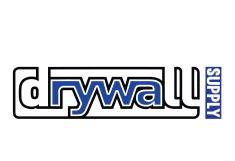[ad_1]
Drywall sheets are a popular material used in the construction and renovation of homes and buildings. They are known for their durability, ease of installation, and versatility in creating smooth, seamless walls and ceilings. If you are considering using drywall sheets for your project, here is everything you need to know about them.
What are drywall sheets?
Drywall sheets, also known as gypsum board or plasterboard, are panels made from gypsum plaster that are sandwiched between two layers of paper. They come in various sizes and thicknesses and are commonly used for interior walls and ceilings. Drywall sheets are designed to be easy to install, making them a popular choice for both DIYers and professional contractors.
Types of drywall sheets
There are several types of drywall sheets available, each with its own unique characteristics and uses. Here are some of the most common types:
1. Regular drywall: This is the most basic type of drywall sheet and is commonly used for interior walls and ceilings. It is available in various thicknesses, ranging from 1/4 inch to 3/4 inch.
2. Moisture-resistant drywall: This type of drywall sheet is designed to resist moisture, making it ideal for bathrooms, kitchens, and other high-humidity areas. It is typically made with a water-resistant core and a moisture-resistant paper facing.
3. Fire-resistant drywall: This type of drywall sheet is designed to provide increased fire protection. It is made with additional additives that make it more resistant to fire and can help contain a fire in the event of a blaze.
4. Soundproof drywall: This type of drywall sheet is designed to reduce sound transmission between rooms. It is made with additional layers of insulation to absorb sound waves and reduce noise levels.
5. Mold-resistant drywall: This type of drywall sheet is designed to resist mold and mildew growth. It is treated with mold-inhibiting additives and is typically used in areas prone to moisture and humidity.
Installing drywall sheets
Installing drywall sheets is a straightforward process that can be done by either DIYers or professional contractors. Here are the basic steps involved in installing drywall sheets:
1. Measure and cut the drywall sheets to fit the space you are working on.
2. Attach the drywall sheets to the wall or ceiling using drywall screws or nails.
3. Tape and mud the seams between the drywall sheets to create a smooth, seamless finish.
4. Sand the dried mud to create a smooth surface.
5. Prime and paint the drywall to finish the installation.
It is important to follow the manufacturer’s instructions and best practices for installing drywall sheets to ensure a professional-looking finish.
Benefits of drywall sheets
There are several benefits to using drywall sheets in your construction or renovation project. Here are some of the main advantages:
1. Durability: Drywall sheets are known for their durability and resistance to wear and tear. They can withstand everyday use and are less prone to dents and scratches compared to other materials.
2. Easy installation: Drywall sheets are easy to install, making them a popular choice for DIYers. They can be cut to size, attached to the wall or ceiling, and finished with tape and mud in a relatively short amount of time.
3. Versatility: Drywall sheets are versatile and can be used for a wide range of projects, including walls, ceilings, and even decorative finishes. They can be painted, textured, or finished with wallpaper to create a custom look.
4. Fire resistance: Fire-resistant drywall sheets provide added protection in the event of a fire, making them a good choice for areas where fire safety is a concern.
5. Soundproofing: Soundproof drywall sheets are ideal for reducing noise transmission between rooms, making them a popular choice for bedrooms, home offices, and other areas where quiet is important.
FAQs
Q: How do I know what type of drywall sheet to use for my project?
A: The type of drywall sheet you should use depends on the specific requirements of your project. If you are working in a high-humidity area, moisture-resistant drywall may be the best choice. If fire safety is a concern, fire-resistant drywall may be more appropriate. It is important to consider your project’s needs and consult with a professional if you are unsure.
Q: Can I install drywall sheets myself, or should I hire a professional?
A: Drywall installation can be done by DIYers, but it is important to have the necessary skills and tools to ensure a professional-looking finish. If you are unsure of your abilities, or if you have a large project that requires multiple sheets, it may be best to hire a professional contractor to do the job. They will have the experience and expertise to install the drywall correctly and efficiently.
[ad_2]



